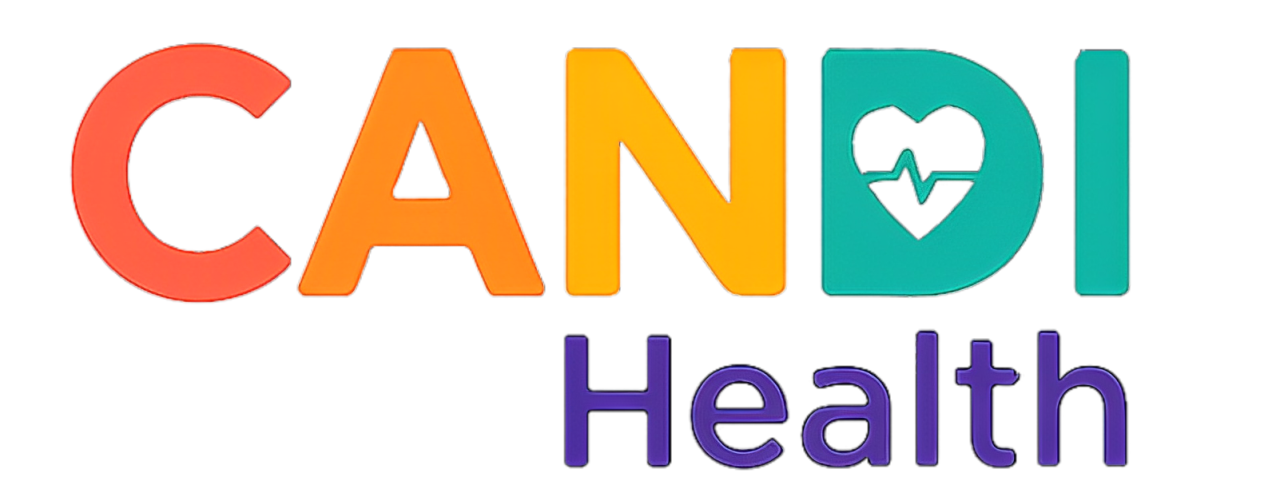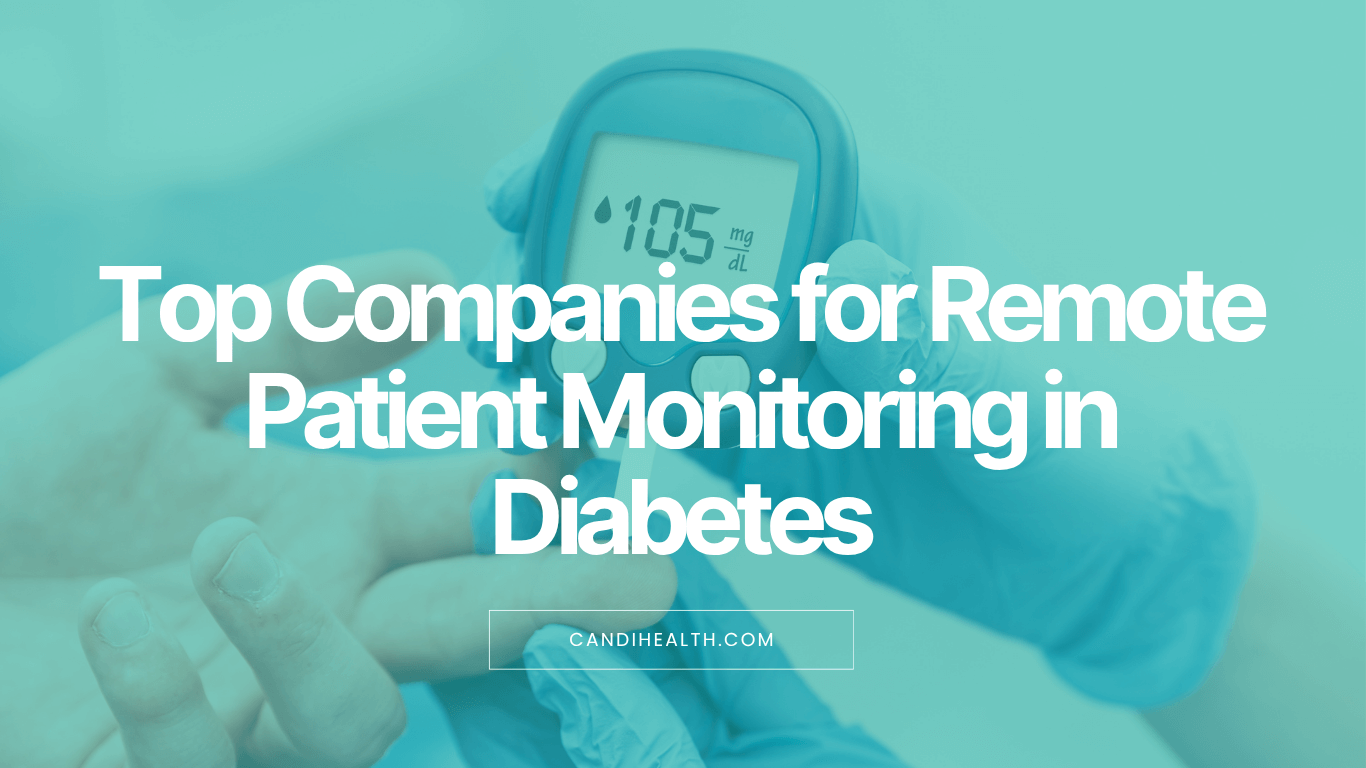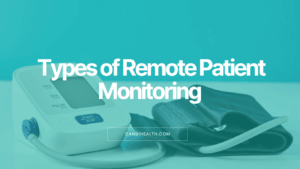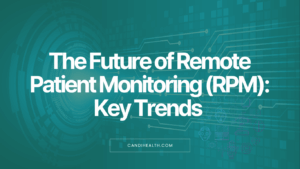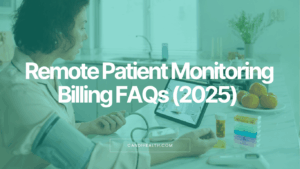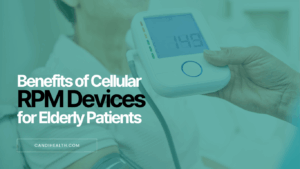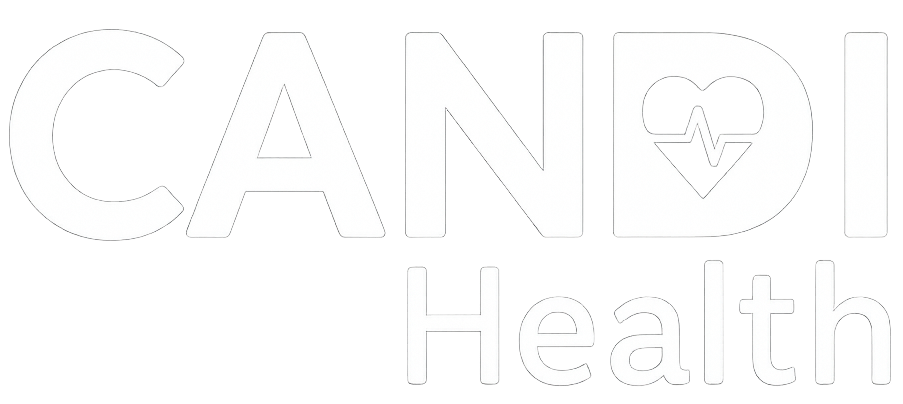Diabetes affects more than 37 million Americans, and managing it goes far beyond medication. Patients need daily glucose checks, diet tracking, and timely communication with their care team. Yet most still rely on occasional clinic visits, which often miss early signs of complications.
That’s why Remote Patient Monitoring (RPM) has become vital in diabetes care. According to the American Diabetes Association, consistent remote monitoring can reduce hospital readmissions by up to 30% and improve medication adherence.
But not every RPM platform is built for diabetes. Some companies specialize in creating connected glucose ecosystems, AI-based alerts, and patient support programs for diabetes management.
This blog explores which companies specialize in remote patient monitoring for diabetes patients, highlighting their unique features, patient outcomes, and how they help providers deliver smarter, more proactive care.
Which companies specialize in remote patient monitoring for diabetes patients?
Here are the leading diabetes-focused RPM providers and platforms. These solutions are built around glucose data (finger-stick meters or CGMs), clinic dashboards, and remote care workflows.
| Company | Details |
| Livongo (Teladoc Health) | Connected glucose meter with cellular upload, real-time insights, and coaching |
| Glooko | Aggregates data from 200+ diabetes devices (CGMs, pumps, meters); population dashboards |
| Rimidi | EHR-integrated diabetes RPM workflows with decision support |
| Health Recovery Solutions (HRS) | Turnkey remote diabetes monitoring with education and nurse alerts |
| IntelliH | Diabetes RPM with AI-driven alerts and predictive insights |
| Dexcom Clarity (for clinics) | CGM data sharing and clinic reporting (Dexcom users) |
| Abbott LibreView (for clinics) | Cloud platform for FreeStyle Libre CGM data; standardized reports |
Here is a detailed overview of companies that specialize in remote patient monitoring for diabetes management.
1. Livongo (Teladoc Health): Pioneer in Connected Diabetes Management
Livongo, now part of Teladoc Health, is one of the first and most recognized names in diabetes remote patient monitoring. Its platform focuses solely on improving daily glucose management through connected devices and real-time feedback.
Key Highlights
- Uses cellular-connected glucose meters that automatically upload readings — no manual logging required.
- Patients receive real-time personalized messages based on their glucose trends.
- Clinicians access continuous data, helping them adjust treatment faster.
- Integrated with Teladoc’s chronic care ecosystem, enabling coordinated management of comorbidities like hypertension and weight.
A study published by the Journal of Medical Internet Research found that Livongo users experienced an average A1C reduction of 0.8% within six months of enrollment, with higher engagement correlating to better outcomes.
2. Glooko: Data-Driven Diabetes Insights Across Devices
Glooko is one of the most widely used diabetes data platforms in the world, trusted by leading health systems, endocrinologists, and device manufacturers. Its strength lies in data unification, pulling information from nearly every glucose-tracking device into a single, easy-to-read dashboard for both patients and clinicians.
What makes it different:
Device-agnostic platform: Works with over 200 diabetes devices, including CGMs, insulin pumps, and traditional meters.
Cloud-based dashboards: Automatically syncs readings and displays glucose trends, insulin usage, meals, and activity data.
Clinical analytics: Provides risk scoring and population-level insights so care teams can prioritize high-risk patients.
Partnership ecosystem: Collaborates with major pharmaceutical companies like Novo Nordisk and Roche to improve digital diabetes care delivery.
3. Health Recovery Solutions (HRS): Integrated Diabetes Care for Providers
Health Recovery Solutions (HRS) focuses on helping providers deliver end-to-end diabetes care through a structured remote monitoring workflow. It’s a complete clinical toolkit designed for hospitals, home health agencies, and virtual care programs.
What HRS Offers
- Pre-configured diabetes kits: Tablets paired with Bluetooth glucose meters for easy patient setup.
- Nurse alert system: Flags abnormal glucose readings instantly, allowing care teams to intervene before complications occur.
- Built-in education modules: Interactive diabetes lessons improve patient understanding and engagement.
- Secure video visits: Clinicians can connect with patients directly through the platform for coaching and medication review.
4. IntelliH: Real-Time Diabetes Monitoring with AI Alerts
IntelliH stands out for its intelligent, data-driven approach to diabetes remote monitoring. The platform combines traditional glucose tracking with AI-based analytics to identify early warning signs before a patient’s condition worsens.
How IntelliH Works
- Collects glucose, blood pressure, and weight data through connected devices.
- Applies predictive algorithms to detect patterns of risk — such as sustained glucose spikes or missed readings.
- Sends real-time alerts to clinicians, allowing earlier intervention and preventing avoidable hospitalizations.
Unlike most RPM platforms that rely on threshold-based alerts, IntelliH adapts over time — learning from patient history to refine accuracy. This makes it a strong choice for endocrinology practices managing large diabetic populations.
5. Dexcom Clarity & Abbott LibreView — Clinic Platforms for CGM Data
Dexcom Clarity is a cloud-based data reporting system tied to Dexcom CGM devices. It gives both patients and clinicians access to trend reports, time-in-range analytics, and glucose pattern insights.
- Patients upload CGM data automatically from Dexcom G6/G7 systems.
- Clinics use the Clarity clinic portal to view patient glucose metrics, graphs, comparative stats, and ambulatory glucose profiles (AGP).
- Recent updates include fasting glucose and post-meal glucose tracking within the portal for more granular insights.
LibreView is Abbott’s cloud system built for data sharing from FreeStyle Libre CGMs. It’s designed to help patients and healthcare teams review glucose data, spot trends, and make treatment decisions.
- Glucose data uploads automatically via the LibreLink app or Libre 3 sensors to the LibreView cloud.
- Providers access patient glucose reports, pattern summaries, time-in-range metrics, and trend graphs.
- LibreView supports integration with EHRs, such as linking data into Epic, enabling live glucose data in the clinician’s workflow.
Dexcom Clarity vs. LibreView
| Feature | Dexcom Clarity | LibreView |
| Device ecosystem | Only Dexcom CGMs | FreeStyle Libre devices (Libre 2, Libre 3, LibreLink) |
| Data upload | Automatic via app/CGM | Automatic via LibreLink / sensor uploads |
| Clinic access | Clinic portal with interactive reports | Web portal with glucose reports & trend dashboards |
| Specialty metrics | AGP, fasting & post-meal glucose reports added recently | Time-in-range, pattern reports |
| EHR / integration | Standalone portal; may require manual export | Integration with EHRs like Epic (automatic linkage) Abbott MediaRoom |
| Use case fit | For practices with Dexcom-using patients | Clinics with Libre-using patients or mixed CGM usage |
Choosing the Right Remote Monitoring Platform for Diabetes Care
Selecting the right RPM platform depends on the type of patients you serve, the devices you support, and how deeply you want to integrate data into your care workflow. Instead of a generic guide, this section presents a decision grid and short scenario examples to help providers decide practically.
Choosing the Diabetes RPM Platform
| If your priority is… | Best Fit | Why |
| Comprehensive patient coaching + engagement | Livongo (Teladoc Health) | Combines connected glucose meters with personalized coaching and lifestyle support. |
| Multi-device data aggregation and flexibility | Glooko | Compatible with 200+ diabetes devices and ideal for large, mixed-device clinics. |
| EHR integration & clinical workflows | Rimidi | Syncs data directly into EHRs, supports real-time clinician alerts and documentation. |
| Hospital-grade RPM with education modules | HRS | Offers turnkey RPM kits, nurse alerts, and built-in diabetes education for patients. |
| Predictive analytics and AI-driven risk detection | IntelliH | Focuses on prevention through early alerts and adaptive learning models. |
| Continuous glucose data visualization (CGM focus) | Dexcom Clarity / LibreView | Provides deep insights into glucose trends, time-in-range data, and automatic uploads. |
Example Scenarios
Scenario 1: A rural clinic with limited tech support
Best fit: HRS — preconfigured tablets and Bluetooth glucose meters make onboarding easy for patients without smartphones.
Scenario 2: An endocrinology center managing multiple CGM brands
Best fit: Glooko — device-agnostic, integrates CGM and pumps data into one dashboard.
Scenario 3: A virtual diabetes program scaling across states
Best fit: Livongo — established infrastructure, remote coaching staff, and proven outcomes for large patient populations.
Scenario 4: Hospitals seeking integrated, AI-driven population management
Best fit: IntelliH or Rimidi — for proactive monitoring, triage automation, and predictive trend modeling.
Final Thoughts
Remote patient monitoring is changing how diabetes is managed — from periodic visits to continuous, data-driven care. Platforms like Livongo, Glooko, Rimidi, HRS, IntelliH, Dexcom Clarity, and LibreView give providers real-time insights that improve glucose control, reduce emergencies, and make patients feel supported between appointments.
The right solution depends on your workflow and patient base. Whether you need AI-powered alerts, multi-device compatibility, or EHR integration, each of these companies brings unique strengths to diabetes care.
Frequently Asked Questions (FAQs)
Which company offers the best remote patient monitoring for diabetes?
Companies like Livongo (Teladoc Health), Glooko, and Health Recovery Solutions (HRS) specialize in remote patient monitoring for diabetes. They offer connected glucose devices, real-time alerts, and data dashboards that help doctors track trends and adjust care faster. The best option depends on a clinic’s size, patient base, and technology needs.
How does remote patient monitoring help manage diabetes?
RPM makes diabetes management proactive. It tracks blood glucose patterns, alerts doctors about abnormal readings, and helps patients stick to their care plans. This continuous feedback reduces complications and keeps blood sugar levels in check.
Which companies provide remote patient monitoring solutions for diabetes?
Leading RPM companies for diabetes include Glooko, Accuhealth, and Health Recovery Solutions (HRS). These platforms combine connected devices, data analytics, and clinical dashboards to help providers remotely manage diabetic patients effectively.
What features should I look for in an RPM company for diabetes care?
When selecting an RPM vendor, focus on device compatibility (CGMs, glucometers), easy EHR integration, automated alerts, patient education tools, and reimbursement support. These features ensure both smooth implementation and better patient outcomes.
What are the benefits of using RPM for diabetes management?
RPM offers consistent glucose tracking, early detection of spikes or drops, fewer hospitalizations, and improved patient engagement. It gives patients peace of mind while helping care teams deliver more personalized treatment.
Can remote patient monitoring be used for both Type 1 and Type 2 diabetes?
Yes. RPM supports both types. Type 1 patients often use continuous glucose monitors, while Type 2 patients can track glucose and blood pressure through connected devices to manage long-term trends effectively.
What makes Glooko popular among diabetes RPM companies?
Glooko integrates data from over 200 devices, giving healthcare providers a unified dashboard to view trends and adjust treatments. It’s particularly effective for multi-device and multi-clinic diabetes management.
Is remote patient monitoring suitable for rural diabetic patients?
Absolutely. RPM bridges the gap for patients who can’t visit clinics regularly. Cellular-based devices transmit data even without Wi-Fi, allowing remote care in rural or underserved areas.
What’s the future of RPM in diabetes management?
The future includes AI-powered data analysis, smarter alerts, and seamless integration with digital health records. RPM will likely become a standard part of diabetes care across clinics and telehealth platforms
